Number of issues 17 | ||
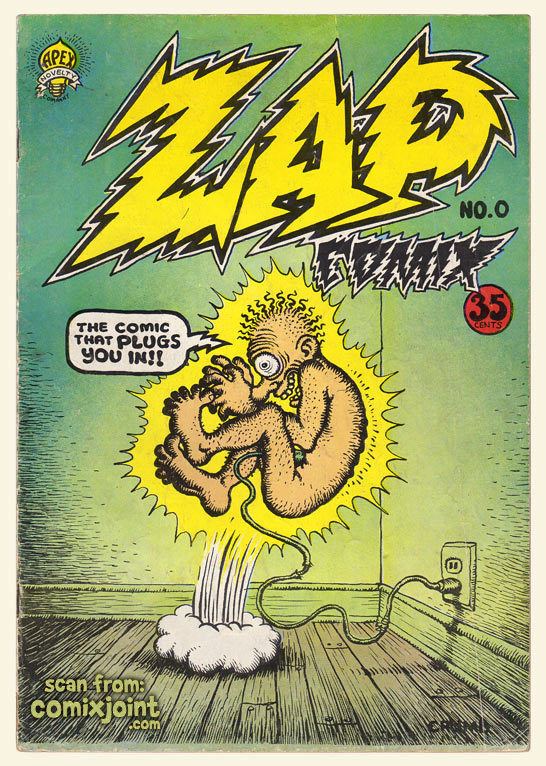 | ||
Publication date February 1968 – November 2014 Main character(s) Mr. NaturalR. CrumbAngelfood McSpadeWonder Wart-HogCheckered DemonTrashman Similar The Complete Crumb C, The Fabulous Furry Fre, San Francisco Comic Bo, Bijou Funnies, American Splendor | ||
Panellogy 041 zap comix
Zap Comix is an underground comix series which was originally part of the youth counterculture of the late 1960s. While a few small-circulation self-published satirical comic books had been printed prior to this, Zap became the model for the "comix" movement that snowballed after its release.
Contents
- Panellogy 041 zap comix
- The complete zap comix video preview
- Overview
- Publication history
- Circulation
- Comix
- Featured characters
- References

Premiering in early 1968 as a showcase for the work of Robert Crumb, Zap was unlike any comic book sensibility that had been seen before. After the success of the first issue, Crumb opened the pages of Zap to several other artists, including S. Clay Wilson, Robert Williams, "Spain" Rodriguez, Gilbert Shelton, and two artists with reputations as psychedelic poster designers, Victor Moscoso and Rick Griffin. This stable of artists, along with Crumb, remained mostly constant throughout the history of Zap.
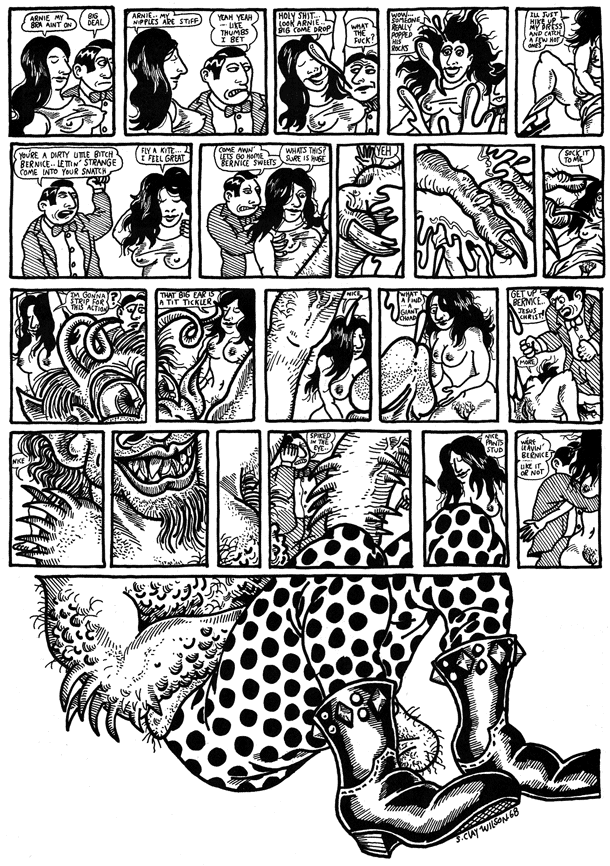
The complete zap comix video preview
Overview

Labeled "Fair Warning: For Adult Intellectuals Only", Zap #1 featured the publishing debut of Robert Crumb's much-bootlegged Keep on Truckin' imagery, an early appearance of unreliable holy man Mr. Natural and his neurotic disciple Flakey Foont, and the first of innumerable self-caricatures (in which Crumb calls himself "a raving lunatic", and "one of the world's last great medieval thinkers"). Perhaps most notable in the debut issue was the story "Whiteman," which detailed the inner torment seething within the lusty, fearful heart of an outwardly upright American.

For the second issue, Crumb invited S. Clay Wilson, Victor Moscoso and Rick Griffin to contribute. Gilbert Shelton joined the crew with issue #3, and Robert Wiliams and Spain Rodriguez joined with issue #4, completing the roster.
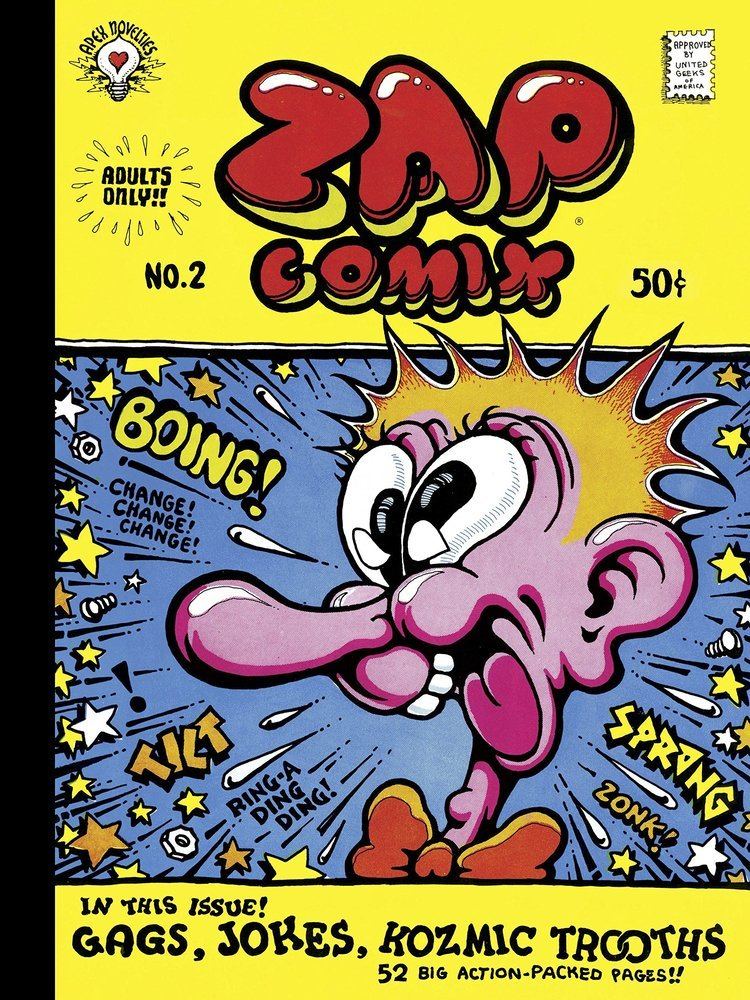
From that point forward, every issue featured a group jam by the "Zap collective," where the cartoonists would pass a story around, each one contributing panels to the overall story (which was usually no more than two pages). (In 1974, between issues #7 and #8 of Zap Comix, the collective produced Zam (Zap Jam), an entire 36-page comic filled with their jams.)
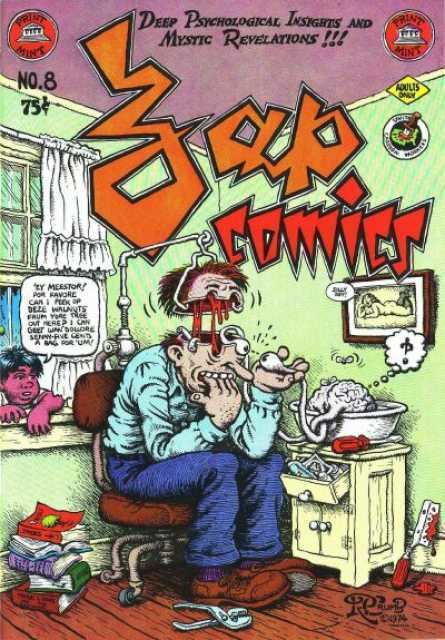
Zap's new publisher the Print Mint weathered a lawsuit filed over the Zap #4, released in 1969, which featured among other things, Crumb's depiction of incest in a middle-class family. The publishers, Don & Alice Schenker, were arrested and charged with publishing pornography by the Berkeley Police Department. Previous to that, Simon Lowinsky, who had a gallery on College Avenue in Berkeley and had put up an exhibition of the Crumb’s original drawings, had been arrested on the same charge. His case came to trial first. He was acquitted after supportive testimony from Peter Selz, a prominent figure in the art world. At that point the city dropped the charges against the Print Mint. In a related case, however — also brought on by Zap #4 — the U.S. Supreme Court ruled in 1973 that local communities could decide their own First Amendment standards with reference to obscenity. (See Miller v. California) In the mid-1970s, sale of drug paraphernalia was outlawed in many places, and the distribution network for these comics (and the underground newspapers) dried up, leaving mail order as the only commercial outlet for underground titles.
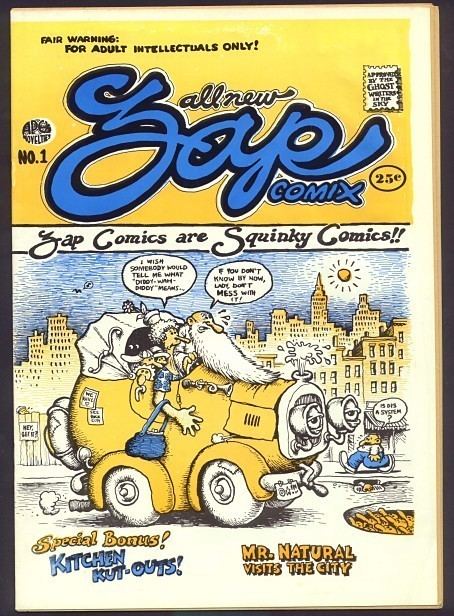
Contributor Rick Griffin died in 1991; Paul Mavrides made his debut as a Zap contributor in issue #14 (1998). (Mavrides was invited to contribute when Crumb announced that he no longer wanted to work on Zap.)
Publication history
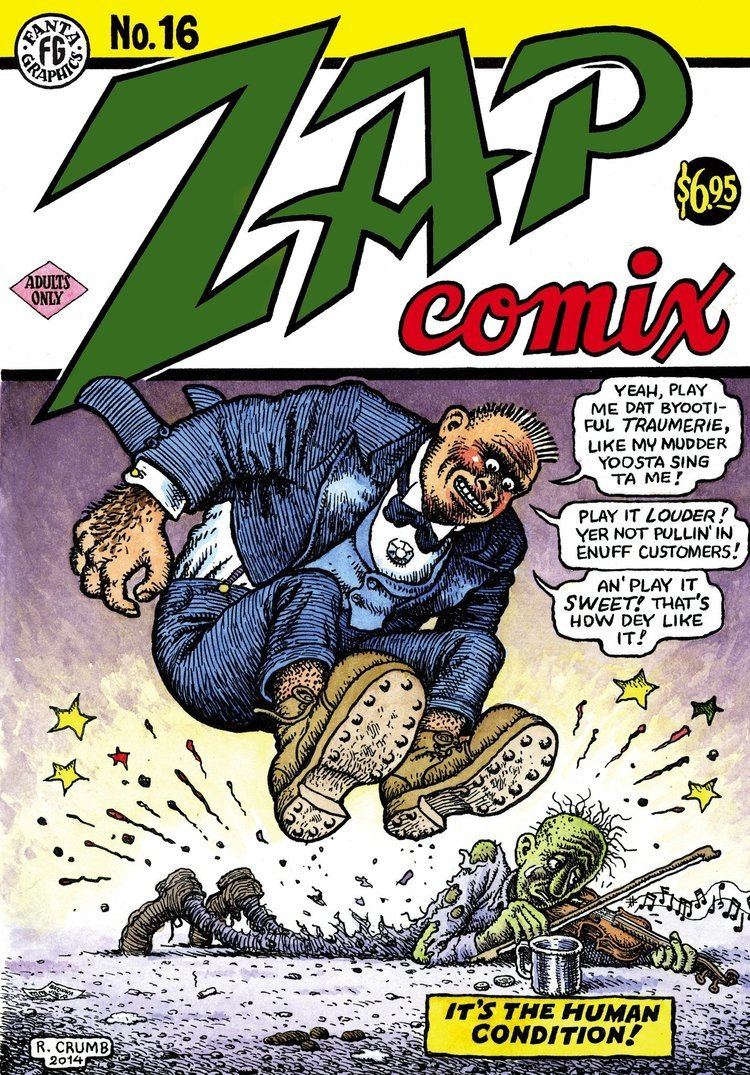
Zap #1 was published in San Francisco in early 1968. Some 3,500 copies were printed by Beat writer Charles Plymell, who arranged with publisher Don Donahue for Zap to be the first title put out under Donahue's Apex Novelties imprint. It is important to note that there are three printings of the first issue, the first one being sold on the streets of San Francisco by Crumb's wife Dana.
The contents of the first Zap were not intended to be the debut issue. Philadelphia publisher Brian Zahn (who had published earlier works of R. Crumb in his Philadelphia-based underground newspaper Yarrowstalks) had intended to publish an earlier version of the comic, but reportedly left the country with the artwork. Rather than repeat himself, Crumb drew a new assortment of strips, which replaced the missing issue.
(The tagline of Zap #1, "Zap Comics are Squinky Comics!!" has an interesting origin. Art Spiegelman called his girlfriend of the time, Isabella Fiske, "Squink." Crumb liked the word and decided to use it on the cover. Crumb himself credits Gershon Legman's 1949 article "Love and Death" condemning the "horror-squinky" in 1940s comics.)
In late 1968, shortly before Zap #3 was to be published, Crumb found Xerox copies of the missing pages from the original Zap #1, which (according to fellow Zap contributor Victor Moscoso) successfully captured the linework but not the solid blacks. After being re-inked by Crumb, those strips subsequently appeared as Zap #0. Thus Zap #0 became the third in the series (even though it was drawn before #1 in 1967), and Zap #3 the fourth.
With issue #4 (Aug. 1969), Zap moved publishers to the Print Mint, which unfortunately weathered a lawsuit related to its contents (see above). A 1973 U.S. Supreme Court ruling led to the collapse of the underground comix market, and after that Zap was published sporadically, with it being typical for three to five years to pass between new issues. Zap continued to be published by Print Mint through issue #9 (1978), when the company stopped publishing comics altogether.
From issue #10 (1982) onward, Zap was published by Last Gasp (which also published many reprints of earlier issues). Again, there were often long periods between issues: altogether, five issues of Zap were published (by Print Mint and Last Gasp) in the 1970s, three issues in the 1980s, and two issues in the 1990s. Zap #15 (ISBN 0867196351) came out in 2005, seven years after the previous issue.
Issues #13–15 all featured cameos by sex-positive feminist Susie Bright as a character within its pages (or on the cover).
A limited edition six-volume hardcover box set containing the complete Zap Comix (ISBN 9781606997871) was published by Fantagraphics in November 2014. Besides including an oral history, portfolio, and previously unseen material, the set also included the never-before published Zap Comix #16 — the final issue in the series. Zap #16 would later be released by Fantagraphics as a stand-alone, 80-page comic in February 2016, with a few changes and additions.
Circulation
The first issue of Zap was sold on the streets of Haight-Ashbury out of a baby stroller pushed by Crumb's wife Dana on the first day. In years to come, the comic's sales would be most closely linked with alternative venues such as head shops.
Due to its unusual outside position in the comic distribution industry, a completely accurate count of Zap's circulation cannot be known, but overall sales for the comic's first 16 issues are in the millions.
"Comix"
While the origin of the spelling "comix" is a subject of some dispute, it was popularized by its appearance in the title of the first issues of Zap. Design critic Steven Heller claims that the term "comix" refers to the traditional comic book style of Zap, and its mixture of dirty jokes and storylines.
